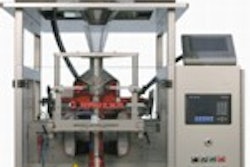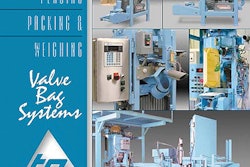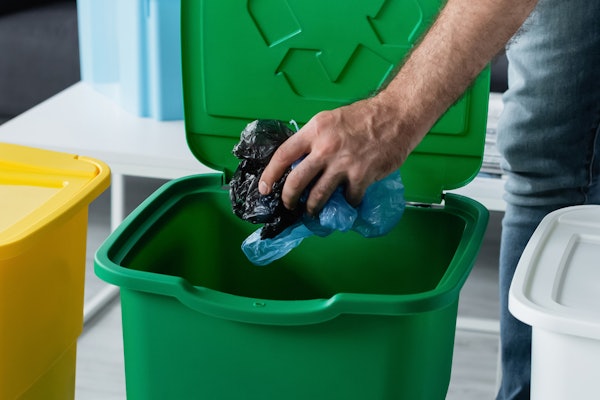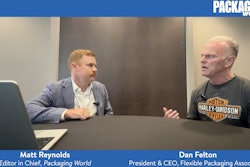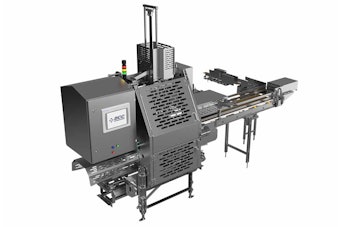In late fall, Packaging World conducted an exclusive interview with Mel Bahr, CEO of MGS Machine Corp. (Maple Grove, MN) and chairman of the Packaging Machinery Manufacturers Institute (PMMI). Bahr spoke on a wide range of issues that affect packaging machine buyers and builders alike, focusing on machine builder innovation.
PW: How are PMMI members responding to the market’s requirements for technologically advanced packaging equipment?
Bahr: To me there are three major areas of innovation in the packaging industry:
1. Responding to customers’ needs and wants to improve the operation of the equipment
2. Applying our vendors’ technology, namely, new components and devices
3. Developing techniques for handling new packaging materials or products
The first area is about the equipment itself—the parts of the machine that we design, the concepts that we employ in our machines. This is where most of our innovation takes place, where we are developing our own technology. Examples of this type of innovation are quicker changeover, user-friendly features, smaller footprint, more flexibility, and higher speeds. At PMMI’s annual meeting held in September, the customers who participated in a panel told us that these are the issues they have asked us to address, and I see this happening with member companies.
The second area currently is concentrated in the electronics arena but does include all components we purchase. Machinery manufacturers spend a lot of time investigating and testing new products. We’re always looking for new technology to apply in our designs so we can improve our equipment. Each manufacturer adds its own unique innovation in applying these products to its equipment.
The third area is the real problem-solving area: getting the materials or products to work effectively with the machines. If there is a new material, a new product, a new bottle, how are we going to handle it? You often get to the point where small details like the size of a flap on a carton, the thickness of a film, the consistency of the product, or the warpage of a plastic component can make or break a project for you. I think packaging machinery manufacturers have done an extraordinary job in this area, and it is often done at a fixed price to the end user.
PW: Should end users specify down to the component level when writing a machine specification?
Bahr: Generally, machinery manufactures welcome a well-written functional specification: It defines exactly what is required for you to complete your end of the contract. This spec should include at least the following:
1. Scope, overview, operations required and
definitions
2. Functions required and modes of operation
3. List of all products, sizes, and tolerances to be run
4. Speeds that these products need to run
5. The expected efficiencies and uptime
6. The environment that this equipment will be running in, including staffing for operators,
material loaders, and maintenance personnel
7. Special requirements including components
8. Changeover expectations
9. Magazine capacities
10. Interfaces
11. Codes that must be complied with
12. Documentation requirements
13. Both factory acceptance test (FAT) requirements and method of testing
14. Training and installation
15. Warranty requirements
What is detrimental to purchasing a machine is the preferred or required components list that often is a part of specifications documentation. If end users absolutely must specify major components such as PLCs, HMI, and drive units, do so, but limit them to what is absolutely necessary. Stay away from specifying the commodity-type items like terminal blocks, wire markers, fittings, valves and sensors. This type of inclusion in your specification can easily increase the price of the equipment by 25% or more and could create an inferior machine. One of the main reasons a manufacturer uses a component is that it has proven itself on their equipment.
PW: There’s been a lot of press lately about designing packaging machinery from the ground up around servo technology in order to get the full benefits of servos. Are PMMI member companies doing this?
Bahr: Overall, servos have improved our industry, but there are also some major roadblocks.
Servos have been used extensively in our industry since the mid to late 1980s, starting with the analog units. Many types of equipment require little or no redesign to receive benefits from servo technology. Others require—typically multiaxis servos—that the machinery be designed from the ground up to receive benefits. As I toured Pack Expo a few years ago, I saw a lot of evidence of design from the ground up.
Now I see a new trend developing, and that is for the use of fewer or no servos on some equipment. One of the reasons is customer feedback—some end users are just not equipped to deal with this technology and in some cases are actually asking for mechanical and pneumatic equipment.
Currently, it does cost more to use servos and they are far too expensive to use for all motion requirements on a machine. I’m starting to see a lot of innovation where mechanical and servo technology is being combined for cost-effectiveness. Each PMMI manufacturer is coming up with what is the correct level of applying servo technology for its type of machinery.
Effective application of servos would be enhanced if servo manufactures would
1. standardize motor mountings to allow different servo brands to be directly interchangeable.
2. standardize electrical characteristics to be directly interchangeable.
3. standardize terminology, so that when a feature is stated, it functions in the identical manner for all brands.
4. standardize safety connection: for example, have sets of terminals that can be hardwired to a machine’s door safety or E-stop circuit. Each brand of servo should operate with the same safety stop process.
5. enhance training of servo sales reps specifically for the packaging industry; currently they are well trained for the ideal or theoretical situations. For example, 1:1 reflected load inertia matching is not necessary for most packaging machines—15:1 or more is usually sufficient.
6. provide lower-cost drive units that offer the few basic necessary features without extra features that are typically not used in packaging.
7. offer specialized, very-low-cost units for automatic changeovers with special software to reduce programming for this feature.
PW: One of the problems with servos, as you point out, is the lack of standards that would allow interoperability. In general, does PMMI support standardization efforts?
Bahr: PMMI works with a number of organizations on standardization issues, and we’re an accredited standards developer through the American National Standards Institute (ANSI). Regardless of the standardization effort, we always support a fair and balanced process, such as the one we employ when updating the ANSI/PMMI B155.1 safety standard for packaging machinery. I think our initiatives in the ANSI/PMMI B155.1 safety standard illustrate our support for standards.
In addition, PMMI has invested in a software package called PackSafe™. It is software that can be used by machinery manufactures as well as end users. The software is a documentation tool for risk assessment, which is a requirement of both the ANSI/PMMI B155.1 standard and CE Mark.
PW: Anything else?
Bahr: The one thing that always strikes me as really interesting about PMMI and packaging machine manufacturers is how small our portion of the industry is. PMMI member sales of packaging machinery amount to just under $5 billion a year. Some of our customers have product lines that produce more than that. It’s always fascinating to me that here we have this little industry that is an essential component in the entire economy: Most every product needs some form of packaging. Eighty-four percent of PMMI member companies are closely held, mostly family-type businesses, with the average size being about $9.5 million [in annual revenues]. We get a lot of joy and self-satisfaction out of being these small companies and serving this large industry. There are very few retail products that do not run through one or more of our member companies’ machines. It just makes it a fun industry to be a part of.

